|
By Peter Guiden, PhD Post-Doctoral Fellow, Northern Illinois University An ecosystem is a complex, wonderful thing. It represents many species of plants, animals, and micro-organisms interacting with each other and the air, soil, and water. It is greater than the sum of its parts. And in restoration ecology, a central goal is to put degraded ecosystems back together. However, doing so is often a challenging process—that same complexity that makes an ecosystem beautiful can also make it difficult to manage. A logical starting point is to restore the native plant community. Plants play so many important roles in an ecosystem: they provide habitat and food for animals, they exchange nutrients with microorganisms, help develop soil, and link aboveground and belowground worlds. Every plant species plays a different role in the environment, so land managers often aim to restore as many native plant species as possible, leading to high biodiversity. At Nachusa, prescribed fire and bison reintroduction are used to meet this goal, knocking back the most competitive plant species and allowing many species to coexist. Hopefully, these diverse plant communities support many diverse animal species…right? It turns out that this question isn’t often asked. It’s difficult to answer, because scientists often specialize on one group of organisms, and individually lack the tools to measure how the ecosystem as a whole responds to management. Answering this question requires assembling an Avengers-style team of researchers, who can complement each other’s interests and expertise, at the same place and time. Luckily, the Nachusa community provided an opportunity for this to happen. Through collaboration between Nachusa, Dr. Holly Jones’ Evidence-based Restoration Lab at Northern Illinois University, Dr. Nick Barber’s Community Ecology & Restoration Lab at San Diego State University, and Dr. Rich King’s lab at Northern Illinois University, we could start to look at links between plants and animals. Each of these groups brings a unique skill set to the table. Dr. Jones and her students study plants and small mammals such as wild mice and voles. Dr. Barber and his students study plants, ground beetles, and dung beetles. Dr. King and his students study larger wildlife, such as snakes. Each of these groups has collected data on these animal communities over the past decade at Nachusa, including how many species occur in these study sites, and in what abundance. This gave us an opportunity to combine our data, and ask some broad, general questions about how restoration works. Here’s a link to the study we did, if you’re interested in the technical details. We wanted to know whether the areas with the most plant biodiversity also had the most animal biodiversity, or if something else explained patterns in animal communities. If plant and animal biodiversity were linked, that would suggest that restoring diverse plant communities may lead to recovery across the ecosystem. However, if the link between plant and animal biodiversity isn’t strong, other management strategies may be needed to boost native animal species. We found that in general, the best explanation of animal biodiversity had little to do with plant biodiversity. For example, small mammal communities were most diverse in areas that hadn’t been burned for a few years, because species like voles make their habitat in thatch (dead plant litter). Similarly, snake communities were most diverse in older restorations, because certain species take a relatively long time to colonize new habitats. This isn’t to say that plant biodiversity is unimportant for animals: there were many cases where plant and animal biodiversity were linked. Small mammal communities were more diverse in habitats with a rich mixture of forbs and grasses, and the most diverse ground beetle communities were found in areas with many plant species. But on average, the effects of management on animal biodiversity were six times stronger than the effects of plant biodiversity. Why didn’t we find a strong link between plant and animal biodiversity at Nachusa? One potential explanation is our choice of study species. Snakes and beetles are carnivorous, while small mammals are opportunistic omnivores, eating both plants and animals. Perhaps animals that are strict herbivores (especially insects with very particular diets) would have been more responsive to plant diversity. But for our animals, the age or structure of the plant community seemed to be more important than the number of plant species present. It’s also important to point out that maximizing animal biodiversity may not be the most important goal in a restoration project. Protecting rare species (like the rusty patch bumblebee) or species that play an especially important role in the ecosystem (like large dung beetles that eliminate large volumes of bison dung) may take center stage. In cases where restoring animal biodiversity is important, however, it may be necessary to consider how land management affects both plants and animals. One key take-home message of this study is that restoration really works. Through the hard work of land managers, volunteers, and scientists, it is possible to recreate diverse plant and animal communities in a very agricultural landscape. While we are constantly trying to learn more about how exactly these species respond to restoration, it is important to reflect on these successes. Ecosystems continue to be mysterious in many ways, but understanding a little bit more about them may help preserve their majesty and diversity for the future. Pete Guiden's ongoing research on restoration ecology is supported with a Scientific Research Grant from the Friends of Nachusa Grasslands. The Nachusa summer science externship is supported by The Nature Conservancy. To get involved with the critical on-the-ground work at Nachusa, consider joining our Thursday or Saturday Workdays or giving a donation to the Friends of Nachusa Grasslands. Donations to Friends can be designated to Scientific Research Grants.
0 Comments
By Jessica Fliginger Field Technician “One of my daily pastimes when the snow is on the ground is to take up some trail early in the morning, and follow it over hill and dale, carefully noting every change and every action as written in the snow. . . . The trail records with perfect truthfulness everything that it did, or tried to do, at a time when it was unembarrassed by the nearness of its worst enemy. The trail is an autobiographical chapter of the creature’s life, written unwittingly indeed, and in perfect sincerity.” — Ernest Thompson Seton, Animal Tracks and Hunter Signs, 1958 Winter is the best time of year to learn about what kinds of animals are around. Whether you are at Nachusa or in your backyard, a fresh blanket of snow can reveal the conspicuous story of an animal’s life through its tracks. Learning how to identify animal tracks and tracing their routes in the snow are exhilarating outdoor winter activities that anyone can do. It starts with using your wildlife detective skills to look up, down, and around at the surrounding environment for clues, such as tracks. You may be wondering where the best places are to look for animal tracks. Truth is, the morning after a fresh snowfall (about 1 to 2 inches), you can go just about anywhere to find them. I typically find plenty of prints by wooded areas with adjoining water sources, i.e. a stream, lake, or pond. If you are a beginner naturalist, I recommend staying near home or going to a place you are familiar with, such as a bike path, park, or even as close as your backyard. One hot spot I like to frequent is my bird feeder; look under your own feeder for evidence of birds, mice, and squirrels. If you are an experienced adventurer and like walking off the beaten path, I recommend previewing a map of the location you intend to search. There are a few useful tools you might want to consider bringing on your investigation: a measuring device, a field journal, a camera, and a guide to animal tracks. If you plan on venturing into unfamiliar territory, I suggest carrying a compass and flagging tape to mark your path — and don’t forget to collect it on your way back! Here’s a tip: If you ever find yourself lost, simply re-trace your own imprints back to the starting point. Most importantly, make sure to bundle up and bring extra clothes/layers. I recommend getting an early start and checking the weather forecast prior to heading out. Since you could be trailing an animal for a long distance, be conscious of the time to avoid being out too late or getting too cold or tired. When identifying an animal track, it helps to know what animals are present in the area. I recommend using the Nachusa Grasslands Mammal Inventory to narrow down your list of possible suspects. Commonly found mammal prints include coyote, fox, opossum, deer, raccoon, rabbit, mouse, and squirrel. Occasionally, bird tracks will show up, such as turkey, crow, pheasant, and duck. Ideally, you want to be able to identify an animal’s print before following its track. After locating a clear print, carefully examine your surroundings and write down any observational notes about the habitat in your field journal — this might yield additional clues as to the identity of your suspect. Keep an eye out for signs of the animal, specifically broken twigs, chunks of bark missing from trees, hair, or animal droppings, otherwise known as scat. Next, lay your measuring device down next to the print and record its length and width. If you prefer to take your time analyzing evidence in the warmth of your home, take a photo of the print with the measuring device next to it for scale to look at later. As you proceed down the trail, feel free to take multiple photos of the track for comparison or make a sketch of it in your field journal. As you study the print, you should be able to distinguish several characteristics about it, including the number of toes, presence of nails, depth of the print, and size and shape of the front and rear paws. Canine prints are quite easy to distinguish; they have claws and are oval shaped with four toes and a concave heel pad at the bottom. The way the toes and pad are arranged should allow you to draw an “X” through the print. Likewise, deer have distinct imprints comprised of a split hoof with two toes. Furthermore, understanding an animal’s walking pattern, or gait, will help aid in its identification. There are four basic walking patterns: zig-zagger, waddler, bounder, and hopper. Zig-zaggers, or perfect walkers, leave a zig-zag patterned track and are indicative of deer, fox, coyote, dog, and cat. Waddlers have wide bodies that seem to shift from side-to-side as they walk, creating a track that consists of four prints where the rear foot does not land in the print of the front foot. Examples of waddlers include raccoons, opossums, muskrats, beavers, and skunks. Bounders, such as weasels, have long skinny bodies with short legs that expand and contract, similarly to a Slinky®, as they bound through the snow. Their tracks look like a cluster of four paws spread about a foot apart between each bound. Hoppers look as if they are leapfrogging, and this can be found in smaller critters, including rabbits, squirrels, mice, and chipmunks. Learning how to identify animal tracks is great way to enhance your observational skills and spend time outdoors during winter. Nothing is more thrilling than identifying a set of mysterious tracks. Although they may remain out of sight, animals are everywhere — get out and look!
By Dee Hudson There are actually many mammals and birds active during the cold weather. What animals might you be able to see this winter? Today I’ll feature a few larger mammal species that I think you will enjoy and be most likely to see during a visit. I will also give you tips on where to look for these winter animals. Bison There is a very popular animal that draws the attention of most of our visitors, and that is our national mammal, the bison. The Nature Conservancy is committed to keeping the bison as wild as possible, so besides some minimal veterinary care during the yearly roundup, the bison breed, birth, feed, and care for themselves without human intervention. Our bison roam across 1500 acres of rolling landscape, so they may not always be visible. For your best chance to see the bison, bring a pair of binoculars and begin your search from the Visitor Center, an open-air covered pavilion that offers outstanding views of the surrounding grasslands, as well as the southern bison unit. Be sure to pick up a hiking brochure there, for the map inside indicates the bison unit locations. Many visitors can also experience a close-up view even from their cars. Just be sure to pull off to the side of the road and turn on your hazard lights. CAUTION: When a lot of snow is present, it is difficult to find parking or a pull-off. Be safe! Also, please be considerate of Nachusa's neighbors, of their property and road use. A six-foot fence surrounds the bison units. For visitor and bison safety, there is no admittance inside these bison units, by foot or by vehicle. Visitors must stay 100 feet from the bison at all times, even when separated by a fence. The bison look tame and gentle, but they are wild and unpredictable animals. Keep in mind that the adults weigh 1000-2000 pounds, are very agile, and can quickly turn and accelerate to 30+ miles per hour. Deer The white-tailed deer is another large mammal often seen at the preserve. Look for them to gather in the early morning or right before sunset. They can even be seen grazing near the bison herd. The deer enter and exit the bison units quite easily, either leaping over the fences or, more often, going under. The fence does not go completely to the ground, and this allows other animals to come and go. The deer tracks are very recognizable. They look like upside down hearts. Beaver Nachusa has beavers throughout the preserve, for these masters of engineering have been drawn to the restored wetland habitats. In winter the beavers are not hibernating, but are snuggled inside their well-insulated lodges. They have stashed a food cache of small twigs and branches in the mud at the bottom of their pond, and they use their lodge’s underwater entrance to access the supply throughout the winter. The water is not too cold for them, even in the coldest Illinois winters, for they have a thick and very warm winter coat. In January they may begin to mate, with their young born in springtime. While the water is frozen, the beavers are unlikely to be seen. However, evidence of their presence in the landscape certainly can, if you know where to look. If you look north from the Visitor Center you can spot the lodge in the restored wetland. It looks like a mound of sticks, with some plants growing on top. Other signs of beaver presence to look for are gnawed trees and beaver stumps.
Red Fox A fox’s fur is so warm that it has no problem curling up on the snowy ground. If its nose becomes too cold, the bushy tail wraps around and makes a great facemask. In the winter, the fox will mainly eat other mammals, such as rabbits and rodents, and of course, it won’t pass up any carrion. In Illinois mating occurs during the winter months, mainly January and February. The young will be born in an underground den in March and April. Look for fox in the prairies and along the woodland edges, and it’s best to begin your search close to sunrise or sunset, because they are mainly nocturnal. Opossum The opossum is the only marsupial species (a mammal with a pouch) native to Illinois, and also to North America. That alone makes this mammal interesting and unique. Then you see that they have an opposable toe and a nearly furless prehensile tail, used to grasp things and climb. With such a naked tail, it might be expected that they hibernate during Illinois winters, but they do not. However, they do stay in their dens during really cold weather, venturing out on warmer winter days. Since opossums are omnivores, winters at Nachusa provide a lot of small mammals to eat; they also eat a lot of road kill (and then occasionally become road kill themselves). For shelter, they may find a hollow log or use one of the stacked brush piles. Opossums are nocturnal, so they’re most likely to be seen in the early morning or before sunset. Look for opossums in Nachusa’s wooded areas near ponds and creeks, for they prefer to have a den near water. Coyote Many Nachusa volunteers have enjoyed a choir of coyote voices during the nighttime hours — yips, barks, and howls — so many communicating at once, that it is hard to tell how many are present. Coyotes are very active at Nachusa during the night, probably feasting mainly on the preserve’s rabbit population, as well as other small mammals. As with many of the other animals discussed, for the most success, look for the coyotes in the early morning hours or before sunset. Look for them running along the vehicle tracks that course through the units. As seen by the coyote footprints and scat, humans are not the only mammals that like to use these vehicle tracks. Come visit the preserve this winter and enjoy Nachusa’s wide-open spaces and special creatures. Let us know in the comment section whether you see any of these mammals. Please visit the Friends of Nachusa Grasslands website for the preserve's full mammal inventory list.
By Elizabeth Bach Ecosystem Restoration Scientist With 2020 drawing to a close, Nachusa science has several accomplishments to recognize:
Science PublicationsScientific publications are the product of years of hard work, collecting and analyzing data as well as writing the paper. I’d like to use this blog post to highlight some of this recently published research. It has been an exciting year for Dr. Holly Jones, Dr. Nick Barber, and their lab groups. Holly and Nick began research at Nachusa Grasslands in 2013 as new faculty at Northern Illinois University (Nick is now at San Diego State University). Their work investigates restoration outcomes related to planting age, prescribed fire, and grazing. In 2020, the team has published five papers:
The Wildlife Epidemiology Lab, led by Dr. Matt Allender, at the University of Illinois Urbana-Champaign has included Nachusa Grasslands as one of their sites in on-going health evaluations of wild turtle populations. Research scientist Dr. Laura Adamovicz has published three papers from her PhD dissertation:
Devin Edmonds, who is a graduate student with Dr. Michael Dreslik at UI-UC and the Illinois Natural History Survey, examined Reproductive output of ornate box turtles (Terrapene ornate) in Illinois, USA. This is the first assessment of ornate box turtle reproduction in Illinois. Meghan Garfinkel earned her PhD from University of Illinois-Chicago this spring. Her research quantified crop pest suppression by songbirds. She found Birds suppress pests in corn but release them in soybean crops within a mixed prairie/agriculture system. Additional data is needed to see if these results can be applied more broadly on the landscape and across years. These initial results indicate birds could provide sizable services to agricultural land around prairie habitat. Physlis Pischl, a PhD student at Northern Illinois University, performed an elegant analysis of Plastome phylogenomics and phylogenetic diversity of endangered and threatened grassland species (Poaceae) in a North American tallgrass prairie. The work showed endangered and threatened grass species were more closely related than expected and likely evolved together in specific grassland habitats. Destruction of those habitats have resulted in many closely related species all being endangered and threatened. Read more about this study. John Vanek shared his work with Dr. Rich King surveying snake communities at Nachusa in this recent blog. John also published Observations of American Badgers, Taxidea taxus (Schreber, 1777) (Mammalia, Carnivora), in a restored tallgrass prairie in Illinois, USA, with a new county record of successful reproduction. While it is no surprise to find badgers at Nachusa, this is a new confirmed report of breeding badgers. Hana Thixton found Further evidence of Ceratobasidium serving as the ubiquitous fungal associate of Platanthera leucophaea (Orchidaceae) in the North American tallgrass prairie (open access) in her MSc research with Dr. Betsy Esselman at Southern Illinois University Edwardsville. Ceratobasidium fungi were by far the dominant fungal partner for EPFO, and genetic diversity of those strains was limited, indicating the fungal partners were consistent across sites. Drew Scott found Plant diversity decreases potential nitrous oxide emissions from restored agricultural soil in this research as part of his PhD dissertation at Southern Illinois University Carbondale. In this study, he found nitrous oxide emissions, a potent greenhouse gas that contributes to climate change, from soils at Nachusa with high plant diversity were about seven times lower than from areas with low plant diversity. View the complete list of Nachusa publications. By Angie Burke Volunteer Coordinator, The Nature Conservancy We are all familiar with the saying “It’s the little things that matter”, and it’s the management of the tallgrass prairies at Nachusa Grasslands that has made a big difference for the littlest of things— mammals. Our paper “Early Small Mammal Responses to Bison Reintroduction and Prescribed Fire in Restored Tallgrass Prairies”, coauthored with Dr. Holly Jones and Dr. Nick Barber, sheds light on how the varying management of prescribed fire, coupled with the reintroduction of grazing bison, has created a habitat haven for the small mammals in a mix of agriculture and rural development.
blocking our safe access to a site, to capturing meadow jumping mice awakening from their winter slumber, every sampling season held a new adventure for us. Some of the little buddies we captured and released were deer mice, white-footed mice, prairie voles, northern short tailed shrew, meadow jumping mice, harvest mice, and my favorite, the 13-lined ground squirrel. Rain, snow, or shine, the little buddies are welcomed to the study each season with excitement by the many stewards, volunteers, and scientists that call Nachusa home. In the first two years since bison were reintroduced, we found fewer small mammals in older sites relative to new restorations and fewer as time since fire increased. Additionally, there was a higher diversity of what we did document in those older sites and slightly lower diversity (fewer than one species, on average) in sites where bison were present. This difference was driven mainly by prairie voles; fire removes litter and residual dead vegetation which is important habitat for voles. The overall abundance was especially influenced by the deer mice, which are able to use the areas with a higher prevalence of bare ground associated with frequent/recent fire on the landscape. Overall we found that bison reintroduction had fairly weak impacts to small mammal communities in the first few years. Bison, when reintroduced at a relatively low stocking rate, are not likely to cause significant shifts to this community or, by extension, to the seed predation and dispersal functions they serve in prairies. The many different types of habitat created by the managers at Nachusa varying prescribed fire with grazing bison maintain the diversity of small mammals on the landscape scale. Continuing to document the changes in the small mammals through time, while capturing the changes with other animal, invertebrate, and plant composition, will help to show how the little things matter on a big scale when it comes to tallgrass prairie restoration.
By Jason Willand, PhD I first visited Nachusa Grasslands in August 2008 while I was working for the Illinois Natural History Survey. I was overwhelmed by the sheer scale of the restorations that comprised the preserve and never envisioned myself conducting research on these restored prairies. As fate would have it, I returned to school in 2009 to start work on my doctorate degree and was able to fit part of my research into the restorations at Nachusa. The research was for the first chapter of my dissertation, where I examined the role of seed and bud banks for plant community regeneration during prairie restoration. The field portion of this work lasted only five days, and afterwards I was hoping that I would have a chance to return to conduct more research. As fate would have it again, I was able to conduct a small research project at Nachusa as I was wrapping up my dissertation in July 2014. The research project was the result of brainstorming between my dissertation advisor Sara Baer and myself. With the imminent introduction of bison on the preserve in October 2014, we wanted to develop a potential long-term monitoring project. We decided that an interesting study would be to examine the resource availability of the remnant and restored prairies before the bison were introduced. Bison were the dominant grazers in the tallgrass prairie ecosystem before settlement by the pioneers. They play a “keystone” role in the maintenance and diversity of prairies because of their wallowing behavior and preferential grazing on graminoids (grasses and sedges). Most bison research to date has been conducted either on private game ranches or remnant prairies, with little research coming from restored prairies. We collected data on three resources that could affect where bison would graze in the introduction area: plant biomass, the forage quality of the biomass, and soil carbon and nitrogen. Knowledge of plant biomass provides a rough estimate of the amount of plant matter available for bison consumption. Forage quality of plant biomass is informative because it not only tells us how much of the plant matter is actually digestible to the bison, but also the fat and crude protein content of the plant matter. Soil carbon and nitrogen are vital because as a plant uptakes them, they allow a plant to produce important macromolecules for growth, such as proteins. In order to adequately sample the bison introduction area we surveyed three different prairie types: remnant prairies, restored prairies more than 15 years old and restored prairies less than 5 years old. To quantify potential differences in resource availability between the three prairie types we collected plant biomass and soil samples from three different “fields” in each prairie type. Both the plant biomass and soil samples were returned to the laboratory at Southern Illinois University, where they were processed. Forage quality samples were sent to the University of Wisconsin Madison Soil and Forage Laboratory for analysis of seven components of forage quality. We found that the restored prairies less than 5 years old had almost twice the amount of plant biomass compared to the restored prairies more than 15 years old and more than twice that of the remnant prairies. Surprisingly, there was little difference in forage quality and stored carbon and nitrogen in soil among the three prairie types. The similarity in forage quality between the three prairie types may be attributed to prescribed burning, as all the fields were burned in April 2014 three months before we sampled them. Prescribed burning has been found to increase forage quality for up to a year after a fire and may have created homogenous plant biomass on the landscape. We expected soil carbon and nitrogen to be higher in the remnant prairies because these soils have not been tilled, a disturbance that has been found to reduce the storage of carbon and nitrogen in agricultural soils. The remnant prairies we sampled perhaps had a lower storage of carbon and nitrogen than expected because the soil was fairly shallow in comparison to the typical deep, loamy soils that characterize many remnant prairies. The findings of this study suggest that bison may prefer the youngest restored prairies because there is simply more plant biomass available and little difference in the forage quality from the other prairie types. Even with these preliminary data it is still difficult to predict where bison will graze. Other factors that need to be considered are the dietary preferences of male and female bison and how prescribed burning creates a more heterogeneous landscape in the three prairie types. Post-introduction data have not been collected, so at this point any predictions of landscape use by bison is speculative at best. Maybe fate will strike again and I will be able to collect more data at Nachusa sometime in the near future. Jason Willand is an associate professor of biology at Missouri Southern State University in Joplin, MO where he currently serves as the assistant department chair and chair of the conservation section of the Missouri Academy of Sciences.
By Ryan Blackburn In the spring of 2013, I had little to no knowledge of tallgrass prairies or the various forms of life they held. I was an undergraduate at the time, and my class at Northern Illinois University had an opportunity to visit Nachusa Grasslands and receive a tour given by one of their dedicated stewards, Jay Stacy. As the class looked out across the beauty rolling over the tallgrass landscape, Jay directed our view downwards at our feet and started naming twenty or more plant species in just a little patch of dirt the size of a laptop. Jay also spoke of the rumors that bison may be coming to the landscape and how they were thought to have the ability to increase diversity of the prairie plant communities which already seemed teeming with life. This was the moment I realized that the tallgrass prairie and plant communities they held were something that I wanted to know more about. After a couple of growing seasons, a reintroduction of bison onto the landscape was accomplished, and my masters research was born. Bison are large animals that require a lot of energy, which mainly comes from one family of plants, the grasses (Poaceae). Due to this selective grazing, bison create open space in their habitats for wildflowers to take root and increase the diversity of the tallgrass prairie overall. At least this is a summary of what had been observed in the research of remnant (never-plowed) prairies west of the Mississippi River which reintroduced bison as well. In hopes to recreate this tale of romance between bison and tallgrass prairies, Nachusa Grasslands reintroduced bison to their preserve of both remnant and restored lands. The question still remained: will their diet in this new area largely be made up of grasses, and how soon would we see changes in the plant communities following their reintroduction? To study this, I looked at both bison diet and differences of plant communities between sites with and without bison over a period of two years. To figure out what the bison were eating, I used a technique called stable isotope analysis on bison tail hair pulled during the annual roundup. This allowed me to find signatures of plants within the bison hair and estimate these plants' abundance within bison diet. Better yet, I could cut bison hair into segments and look for seasonal changes. Through this analysis I was able to estimate major dietary groups of their diet between May 2016 and September 2016. I found that bison were doing what Nachusa brought them here to do: eat grasses (for the most part)! However, in late summer bison started to transition from largely grass species to wetland species and some wildflowers, something that had never been documented before. This was an unexpected shift that may lead to unforeseen consequences to wetlands, but further research is needed to speak to this. Now that we know bison are mostly eating grasses during the growing season, we want to know how this might be impacting prairie plant communities. Attempting to answer this question, I, along with a team of dedicated plant enthusiasts, counted and measured percent cover of plant species across sites with and without bison. I quantified these communities in a variety of ways and compared them to see if bison were driving any differences between the two communities. Even though the bison had only been at Nachusa for three years, there were already evident changes happening within the plant communities. As predicted, areas with bison had more variation within their plant communities and had a higher ratio of native to non-native plants than those sites without bison. Further analysis shows that both variation and native to non-native ratios may be driven by bison preference of certain species such as bluegrasses (Poa compressa and Poa pretensis) suggested by a higher occurrence of these species in sites without bison. The bison of Nachusa Grasslands were reintroduced to do a job: increase the diversity of plant communities. Though my research does not yet see an increase in diversity, it does suggest that bison are starting to go to work eating grasses and changing plant communities around them. Continued monitoring of these communities (especially those tasty wetland communities) is needed to gain a better understanding of bison impacts and how they progress in restored tallgrass prairies. Ryan Blackburn just received his M.S. degree studying bison diet and their role in the restoration of plant communities in tallgrass prairies. Ryan is also looking at grazing impacts on a landscape scale using drone aerial imagery. In 2016, he received a $1,500 Friends of Nachusa Grasslands Scientific Research Grant for his "Determining Bison Diet and Bison Effects on Vegetation in a Chronosequence of Restored Prairie at Nachusa" project.
By Heather Herakovich, MS Birds are known harbingers of spring. Although most stick around during the brutally cold Illinois winter, we don’t take much notice until they are everywhere in our yard, waking us up in the morning and pooping on our cars: spring time! It’s finally springtime, and at Nachusa the birds are singing, vying for territory, and finding mates. These aren’t your typical backyard birds like the American robin and northern cardinal, who are your usual early morning alarm and repeating snooze. Nachusa holds a wide variety of bird species, including some of the ones in the most need of conservation: grassland birds. They come with funny names like bobolink and dickcissel, and in all shades of brown and yellow and sometimes black. Grassland (prairie) birds are declining at a faster rate than most bird species, and a majority of this has been caused by habitat loss. Illinois is the prairie state, but only one hundredth of its original prairie remains. Places like Nachusa are doing their best to restore the agriculture fields and recreate the best prairie as humanly possible. Doing this requires a lot of hard work, hours of picking seed, planting seed, removing unwanted plants, burning portions of the prairie and mowing. The birds seem to be responding to this management fairly well. However, there is an elephant in the room, or shall I say a bison in the prairie. American bison are our national mammal, and rightfully so. These large herbivores used to roam most of the contiguous United States, until they were hunted to near extinction. I’m sure you’ve heard the story. But now they’re back! Grazing is a crucial disturbance in prairie habitat, providing habitat for a lot of species and open space for a lot of plants. But how will birds respond to this large, iconic grazer on its new home in Franklin Grove, Illinois? When I started my graduate degree at Northern Illinois University in 2013, I was able to start trying to answer that question more specifically by looking at how their nests were going to be impacted by bison. Bison can impact bird nests in a variety of ways. There are the obvious negative direct ones like trampling and dislodgement, but there are also some not-so-obvious impacts. These impacts can be either positive or negative and can affect the nesting habitat, nesting material, clutch size, and ultimately the survival of the chicks until they leave the nest (nest success). Seeing if bison are impacting nest success means I must find the nests first. This is the most difficult part. They are roughly the size of a compact disc, made from the vegetation they are in, and wickedly hard to find. If you come by Nachusa early in the morning this summer, I’m sure you’ll see me walking in the prairie, waving around a stick, and waiting “patiently” for a bird to fly from the vegetation. Although difficult, watching these nests through time is a very rewarding experience. I’ve seen nests being built, eggs being laid, chicks hatching, and chicks leaving the nest. Please don’t try this at home, though. Nests are sensitive to human disturbance, and I follow specific protocol to not influence their nest success. Bison don’t seem to be influencing their nest success either, negatively or positively. This is good news. They are one of the main sources of disturbance in the prairie, and it is a relief that they are not trampling nests of birds in decline, at least four years post-reintroduction. Watching these nests is only a part of my graduate research. I am also looking at how bison may influence nest predators, brood parasitism by brown-headed cowbirds, and what bird species are present. So far, I am not seeing anything change enough to be consider a bison impact. Time will tell if there will ever be a noticeable impact of bison on grassland birds. If I were here in ten years, I would try to find out. The beautiful prairie and bison are a great reason to visit Nachusa, but don’t forget about the birds. Sure, they all look similar and are hard to spot, but they are our harbingers of spring and make the prairie sing in the summer. Heather Herakovich is a PhD graduate student at Northern Illinois University. Heather studies grassland bird nest density, nest success, and species composition in restored plots of varying age as well as remnant control prairies. Heather is attempting to quantify the effects of bison reintroduction, prescribed fire, and restoration age on grassland bird populations at Nachusa.
First things first: bison or buffalo? Bison is the scientific and more accurate term. Bison are not buffalo, like the African buffalo (Syncerus caffer) or water buffalo (Bubalus bubalis). The word "buffalo" has had a long usage on this continent and has accumulated so many layers of cultural resonance that it has also become an acceptable term. There have been many ancient ancestors to our modern bison. Possibly arriving on the continent during one of the ice ages, Bison priscus, or steppe bison, may have originated in Siberia. Perhaps here as early as 600,000 years or as late as 300,000 years ago, B. priscus was larger than the modern bison, measuring at the shoulder about six and a half feet. B.priscus' horns were about one and a half feet in length. After B. priscus died out, Bison latifrons became dominant. This bison was approximately 20 percent larger than modern bison, standing over 8 feet in height, with 7 foot horns. Bulls may have weighed as much as 4,000 pounds. It is the largest bovid ever found. This species was mainly located in the western part of the continent and may have arrived here 300,000 years ago. Following B. latifrons was Bison antigus, much smaller bodied with smaller horns. This is the most common large herbivore found in the La Brea tar pits. They existed here for only about 12,000 years, to be replaced by Bison occidentalis. Again, notable for a smaller size than previous species, with horns that pointed upwards and not forward, B. occidentalis occupied the continent for some 5,000 years. Bison bison, the modern bison, is the smallest bison species to ever occupy North America but is also the most prolific. Arriving between 12,000 to 10,000 years ago, estimates as to number have varied over the years, but scientists now agree that about 30 million bison roamed over the Great Plains, a vast grassland formed after the last ice age about 10,000 years ago. By the time of European settlement, B. bison were found in all parts of the present United States, except for the states of Connecticut, Rhode Island, New Hampshire, Vermont, and Maine, grazing in open grasslands around the edges of forests. It was in the 19th Century that bison numbers dwindled down to almost extinction level. Reasons for this are varied and are still debated by scientists. Climate change was a factor, with long periods of drought affecting the grasslands. The settlement of the West reduced grassland habitat. European reintroduction of the horse to the continent greatly improved the efficiency with which native tribes hunted the animal. In 1869, the transcontinental railroad was completed, while the next year a new tanning process was developed that made bison hide much more pliable. With the new tanning process and an efficient means to get the hides to market, the demand for buffalo hides exploded. It is estimated that as many as 5,000 hide hunters, armed with the latest in firearm technology, descended on the plains, killing millions of bison. This may or may not have been sanctioned by the military, looking for ways to keep hostile tribes in check by diminishing their food supply. This is a controversial topic, not resolved presently. On the other hand, it was in the 19th Century that measures began to be taken to protect bison. In 1872, Yellowstone was made the country's first national park, with a population of bison grazing its grasslands. In 1894 the Lacey Yellowstone Protection Bill was passed to protect all wildlife in the park, including the last 25 wild bison of Yellowstone. In 1905, the American Bison Society, composed of politically powerful men, was founded to help save the bison and make the public aware of their dire situation. Teddy Roosevelt, then President of the the United States, was made honorary president of the society. This was followed in 1908 by the creation of the National Bison Range in Montana, established to protect wild bison from extinction. These measures of protection led to a number of growing wild herds. More recently, The Nature Conservancy has taken steps to insure the continuation of wild bison herds roaming free in restored prairie habitat. Wind Cave National Park in South Dakota has maintained genetically pure (no cattle genes) bison but can only sustain 500 animals. Partnering with Lame Johnny Creek Ranch, a privately owned ranch in South Dakota, The Nature Conservancy maintains a herd originally from Wind Cave, to increase the genetically pure bison at "satellite" sites in various locations. These bison can now be found at Broken Kettle Preserve in Iowa, Dunn Ranch in Missouri, Tallgrass Prairie National Preserve in Kansas, Midewin National Tallgrass Prairie near Joliet, Illinois, and our own Nachusa Grasslands. On May 9, 2016, President Barack Obama signed into law the National Bison Legacy Act, making bison the United States' National Mammal. It is a hopeful sign that a mammal that once ranged freely across the entire continent in the millions, and then was almost lost to extinction, is once again making a comeback.
You too can be part of the legacy of protection by supporting organizations that protect their habitat. Visit http://www.nachusagrasslands.org/donate.html to see how you can help. __________________________________ Sources Lott, Dale F. American Bison: A Natural History. Berkeley, CA: University of California Press, 2002. Flores, Dan. American Serengeti: the Last of the Big Animals. Lawrence, KS: University Press of Kansas, 2016. Savage, Candace. Prairie: A Natural History. Vancouver, B.C.: David Suzuki Foundation, 2004. The Nature Conservancy. "Putting Bison Back on the Prairie." (2016). Retrieved from: http://www.nature.org/ourinitiatives/regions/northamerica/unitedstates/northdakota/explore/putting-bison-back-on-the-prairie.xml. ____________________________________ This week's blog was written by Charles Larry, a volunteer and photographer at Nachusa. To see more of his images, visit charleslarryphotography.zenfolio.com. |
Blog CoordinatorDee Hudson
I am a nature photographer, a freelance graphic designer, and steward at Nachusa's Thelma Carpenter Prairie. I have taken photos for Nachusa since 2012. EditorJames Higby
I have been a high school French teacher, registered piano technician, and librarian. In retirement I am a volunteer historian at Lee County Historical and Genealogical Society. Categories
All
Archives
January 2024
|
CONNECT WITH US |
|






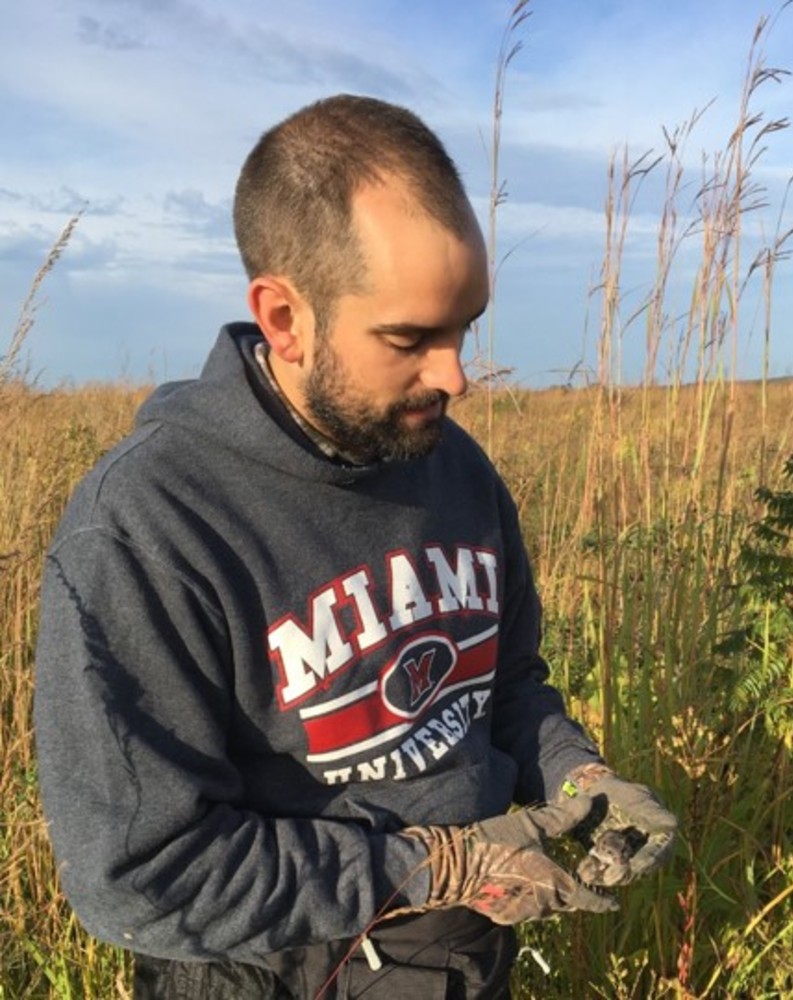








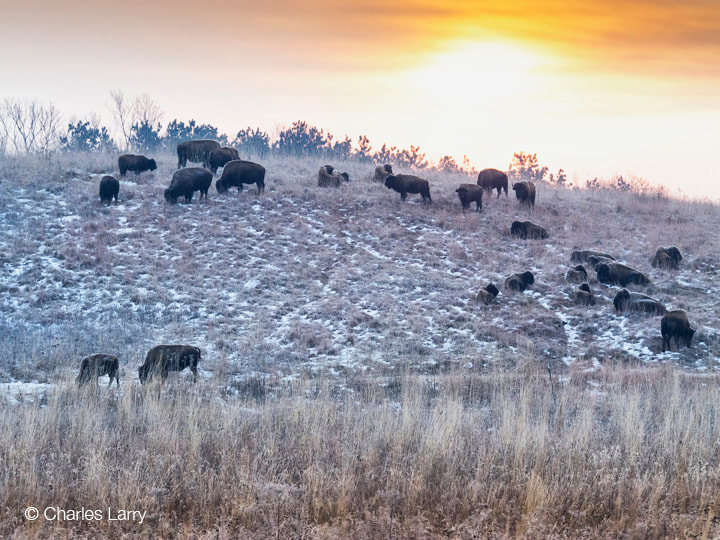





















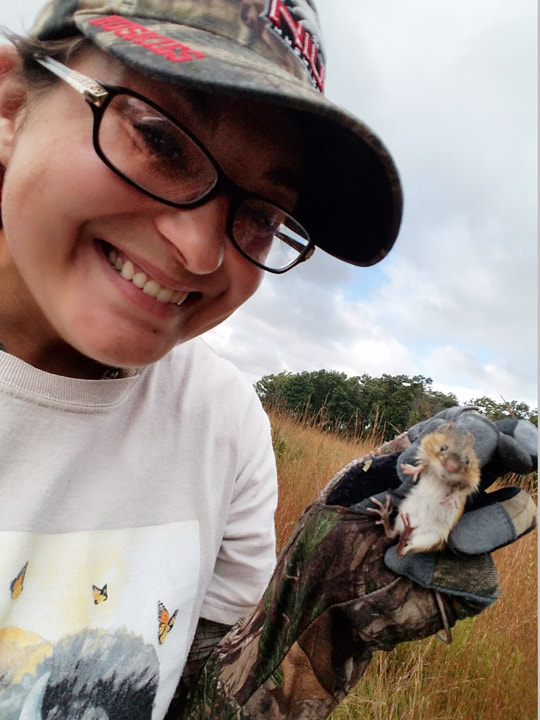


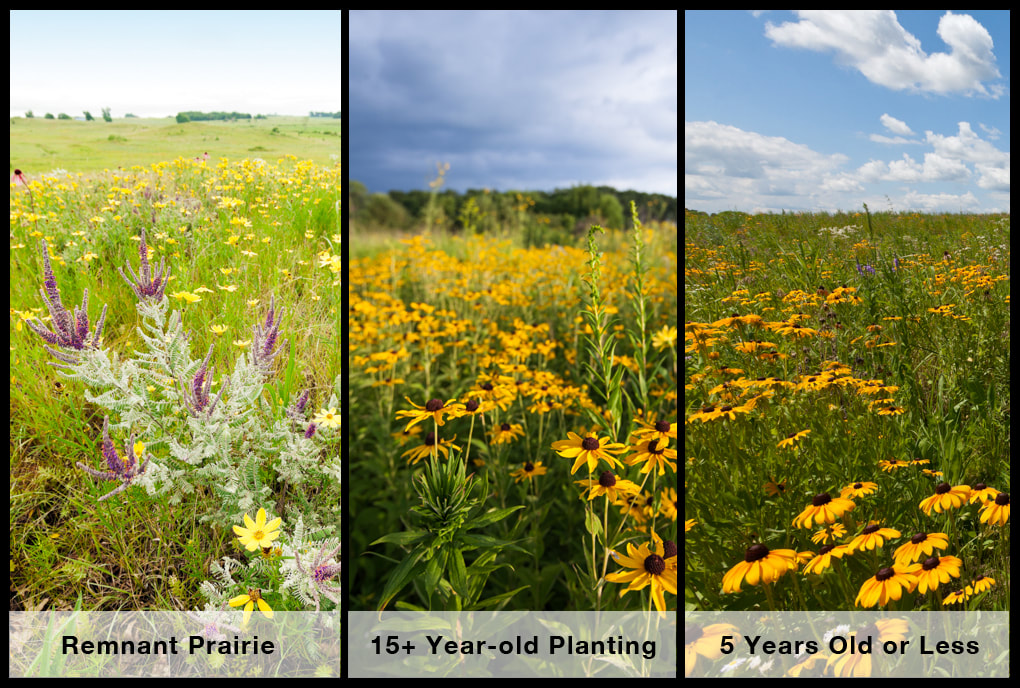

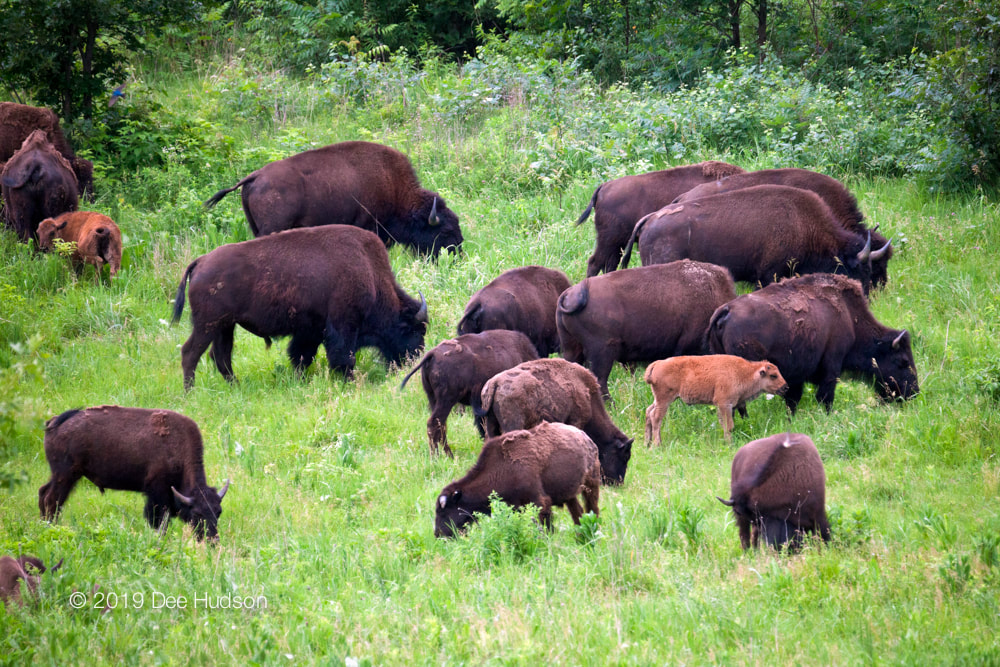




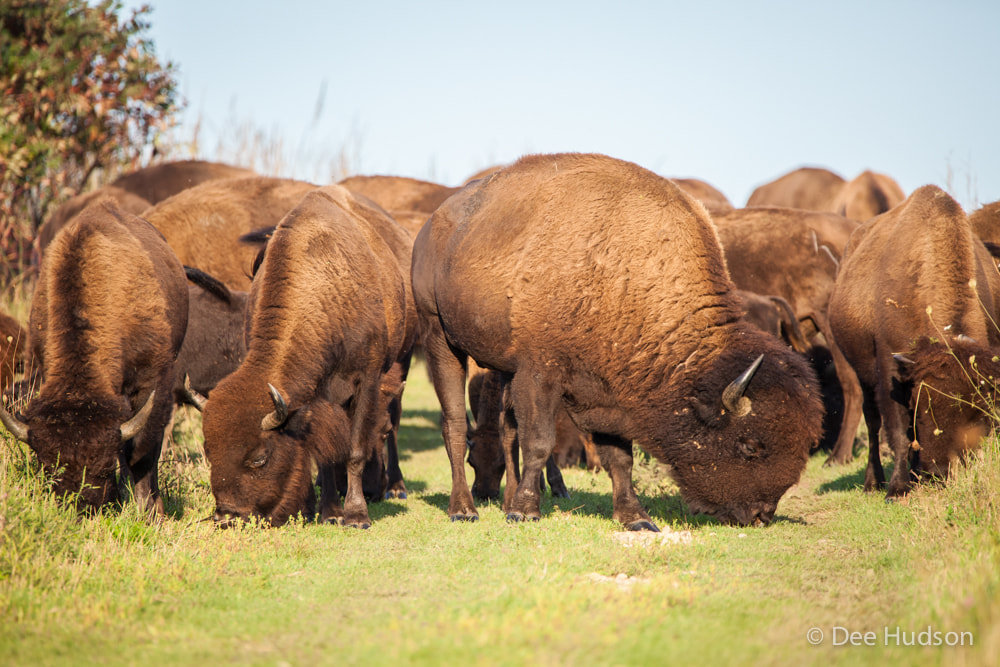

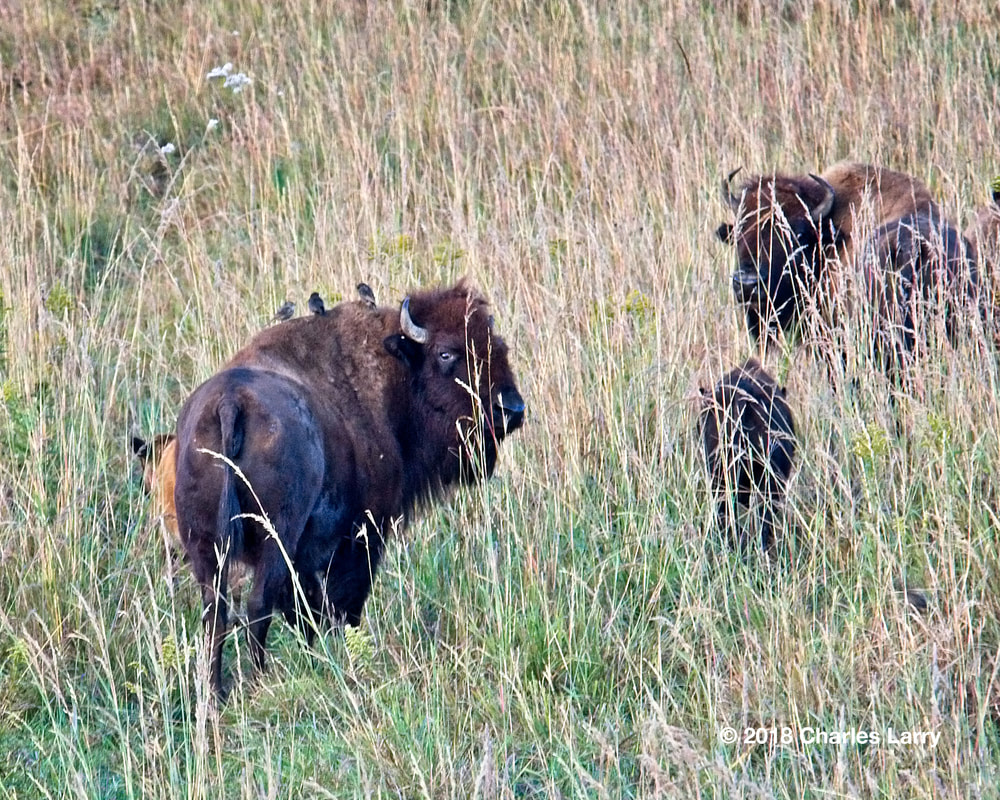
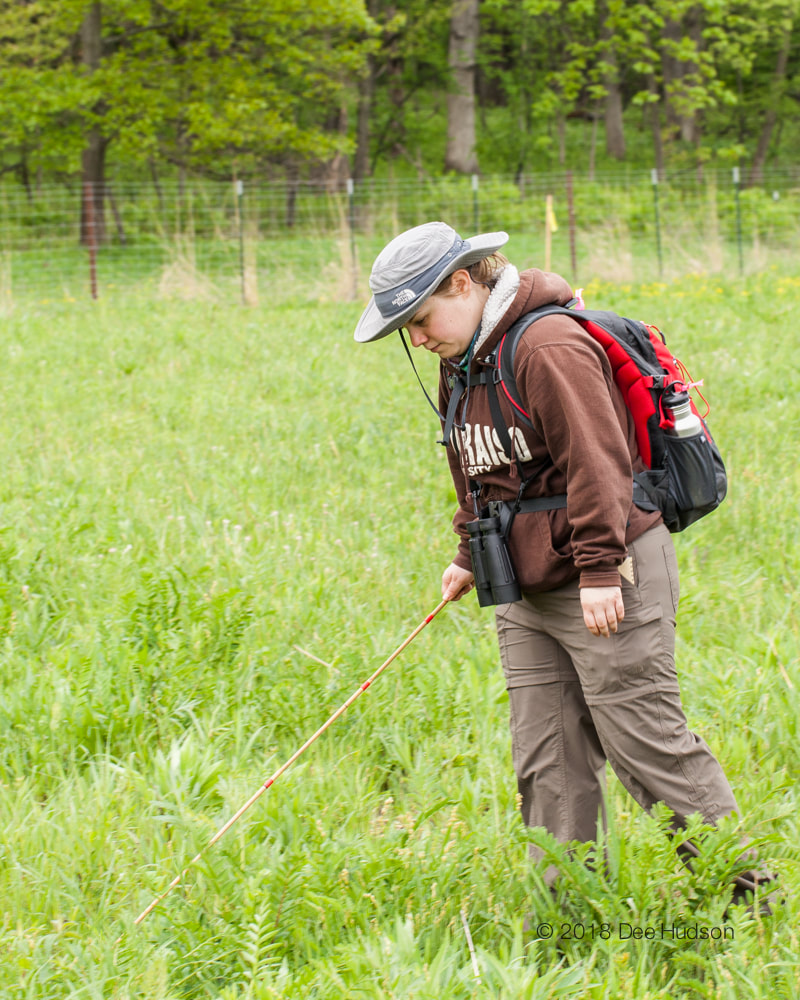


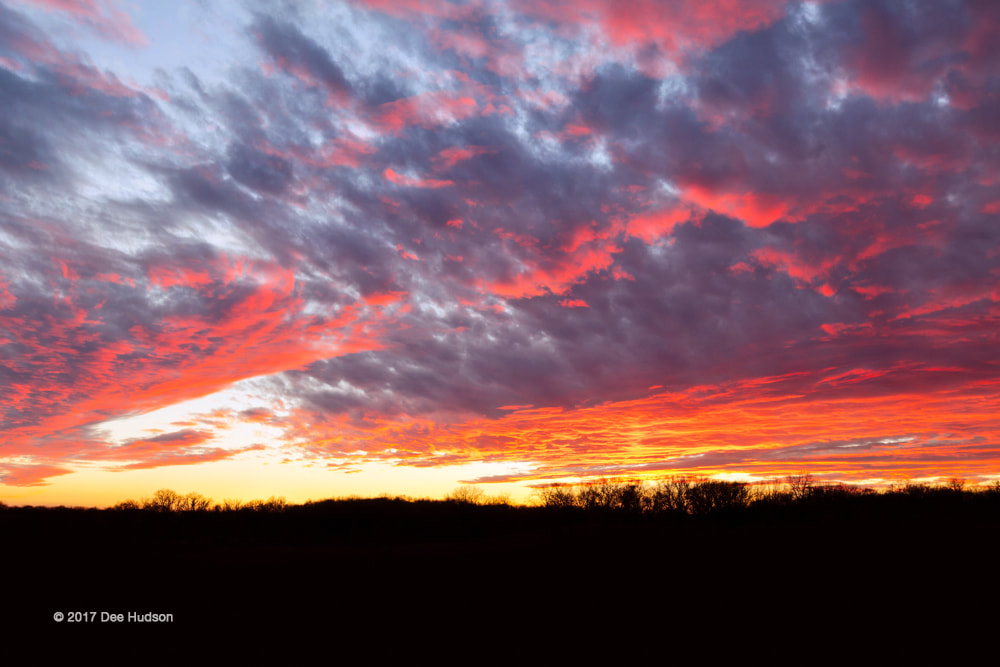



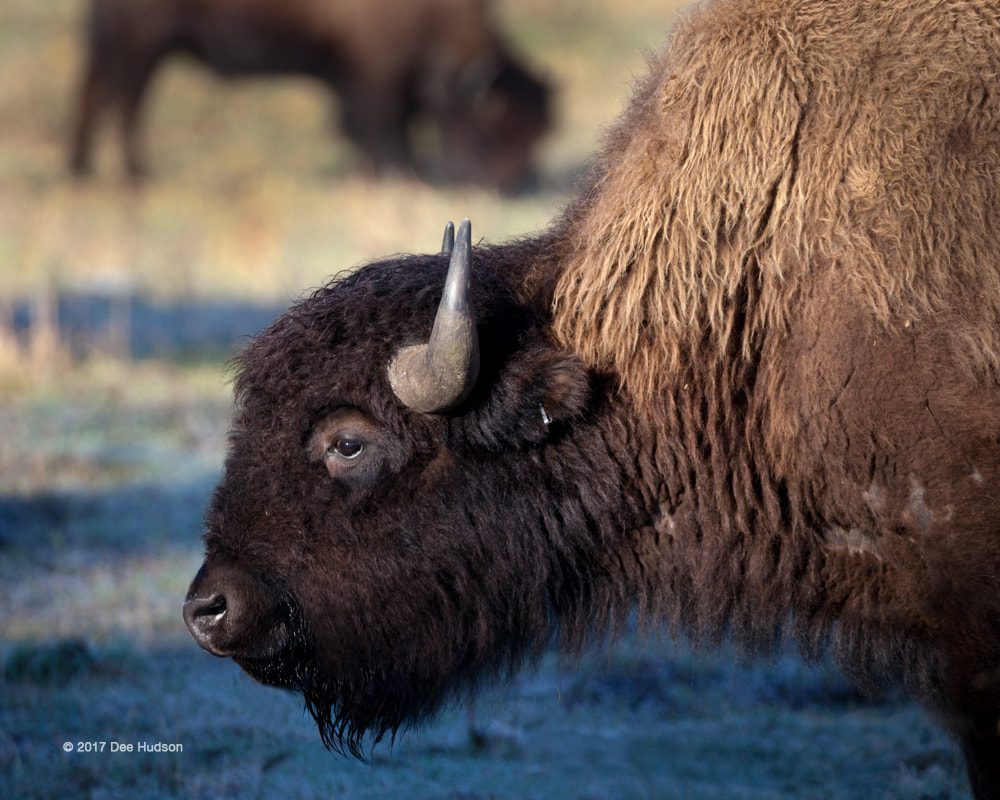
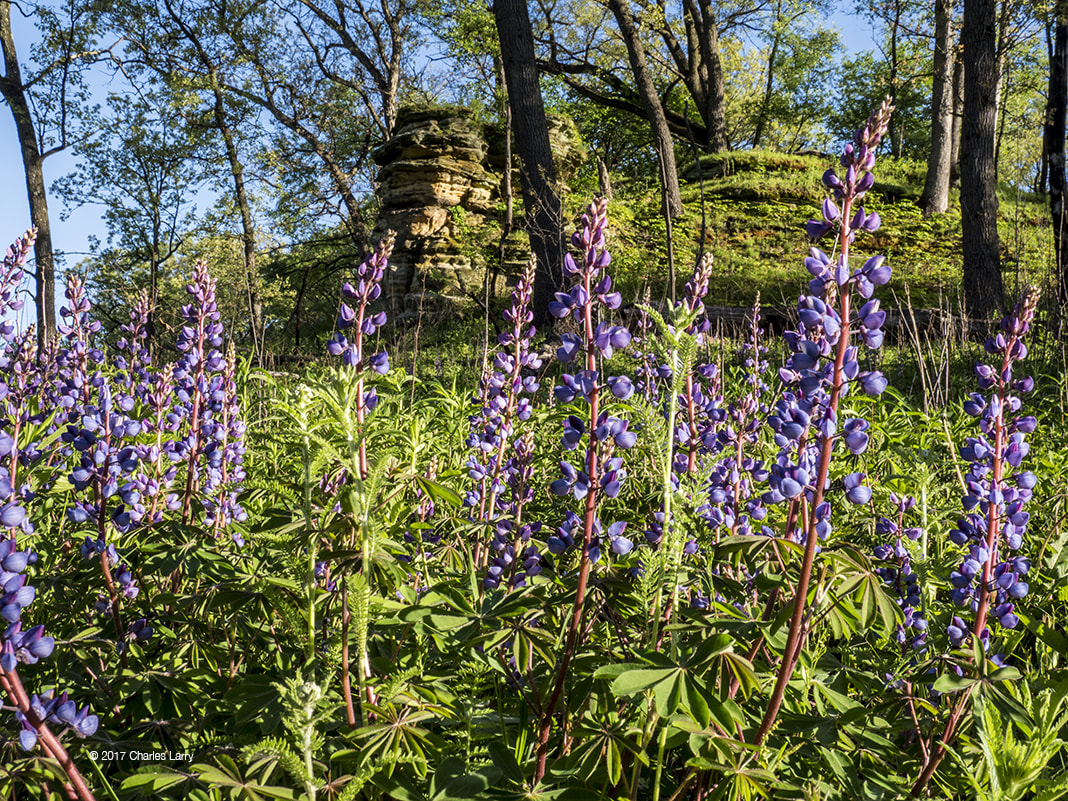















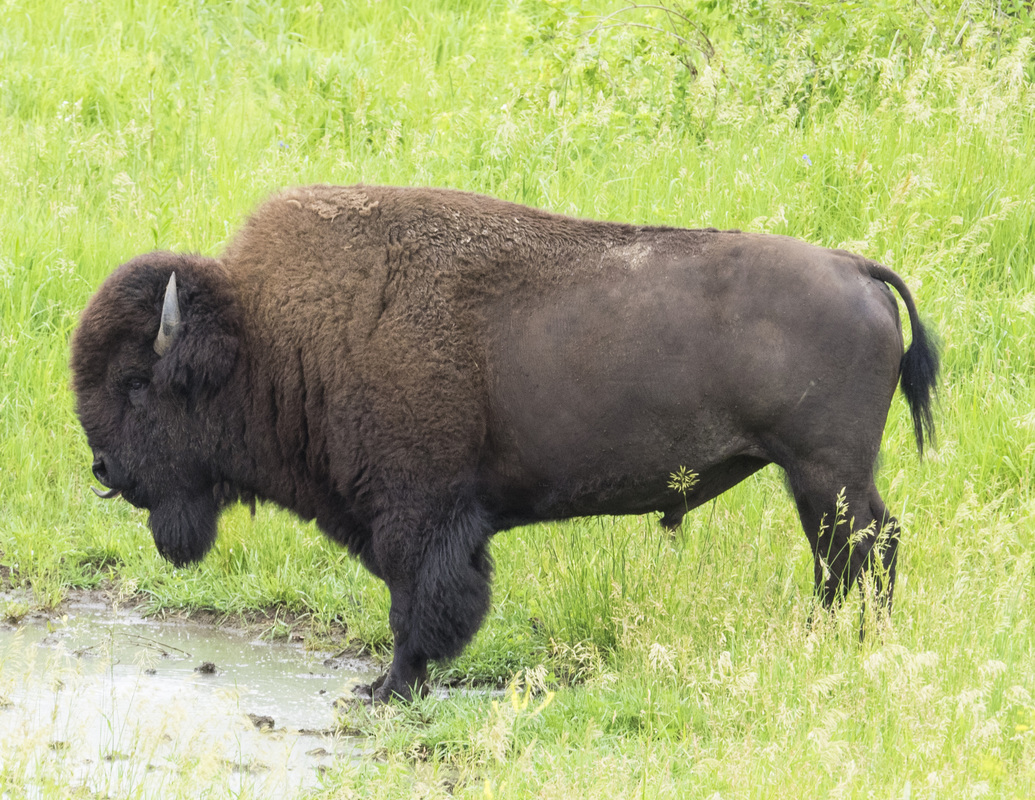
 RSS Feed
RSS Feed